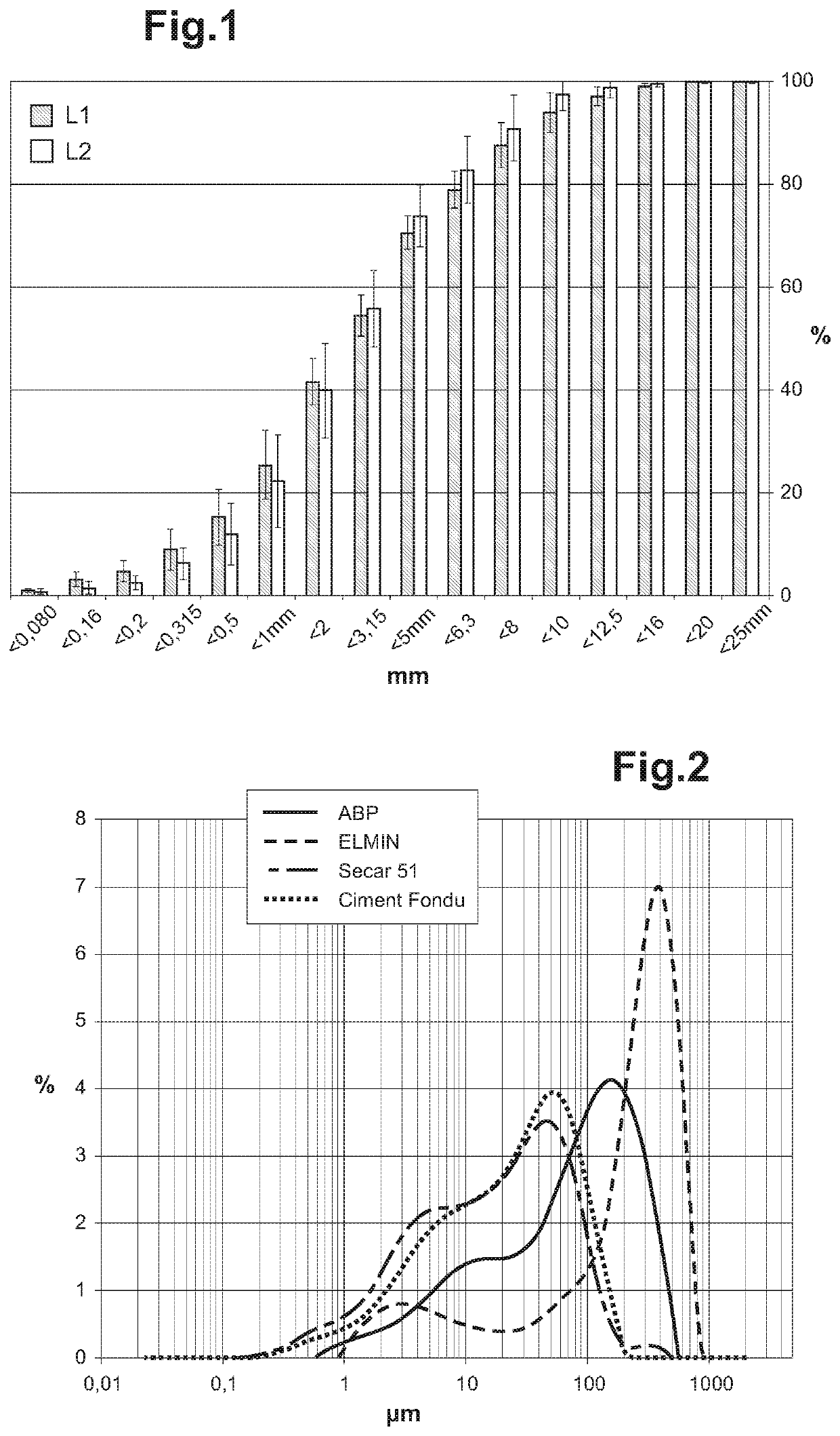Method for obtaining a compacted material and compacted material obtained thereby
a technology of compacted materials and compacted materials, applied in the field of compacted materials, can solve the problems of premature wear of rotary machines, impact and friction, and formation of dust or fine particles of raw materials, and achieve the effect of improving mechanical compressive strength
- Summary
- Abstract
- Description
- Claims
- Application Information
AI Technical Summary
Benefits of technology
Problems solved by technology
Method used
Image
Examples
example 1
[0304]In Example 1, the compressive strength and the crumbling rate of a compacted material of red bauxite particles obtained according to the process of the invention (Example 1a) were compared with those of a natural block of red bauxite (Example 1ref), and to those of a compacted material of red bauxite particles obtained according to a process not in accordance with the invention (Example 1 b). Here, the process not in accordance with the invention differs from the process according to the invention in that it does not use vibration.
[0305]Step a): the dry composition used to manufacture the compacted materials in Examples 1a and 1b comprises, by mass based on the total mass of the dry composition, 85% red bauxite of the “ELMIN” type and 15% Ciment Fondu® cement, the respective properties of which have been described in Parts III.1 and III.2.
[0306]In practice, all the red bauxite particles have been sieved with a 560 micrometer sieve so that its particle size distribution has a f...
example 2
[0315]Example 2 uses the principle of Example 1, but with compacted material of white bauxite particles and a natural block of white bauxite.
[0316]Thus, in Example 2, the compressive strength and the crumbling rate of a compacted material of white bauxite particles obtained according to the process of the invention (Examples 2a, 2c) were compared with those of a natural block of white bauxite (Example 2ref), and with those of a compacted material of white bauxite particles obtained by a process not in accordance with the invention (Examples 2b, 2d). Here, as in Example 1, the process not in accordance with the invention differs from the process according to the invention in that it does not use vibration.
[0317]Step a): the dry composition used to make the compacted materials in Examples 2a and 2b comprises, by mass based on the total mass of the dry composition, 85% white bauxite and 15% Secar® 51 cement, whose respective properties have been described in Parts III.1 and III.2.
[0318...
example 3
[0327]In Example 3, the compressive strength and the crumbling rate were compared for materials compacted according to the process of the invention (Examples 1a and 2a), and for materials compacted under very high compressive stress but without vibration (Examples 3a, 3b and 3d).
[0328]The dry composition used to make the compacted materials in Examples 3a and 3b comprises, by mass based on the total mass of the dry composition, 85% red bauxite and 15% Ciment Fondu® or Secar® 51 cement, the respective properties of which have been described in Parts III.1 and III.2. In practice, the red bauxite particle set has been sieved with a 4 mm sieve so that its particle size distribution has a first reference diameter d90 equal to 3.5 millimeters, a second reference diameter d10 equal to 315 micrometers, and a median diameter d50 equal to 2 millimeters.
[0329]The dry composition of Examples 3a and 3b is mixed with 7% water, by mass based on the total mass of the dry composition.
[0330]The dry c...
PUM
| Property | Measurement | Unit |
|---|---|---|
| diameter d10 | aaaaa | aaaaa |
| diameter d10 | aaaaa | aaaaa |
| frequency | aaaaa | aaaaa |
Abstract
Description
Claims
Application Information
 Login to View More
Login to View More - R&D
- Intellectual Property
- Life Sciences
- Materials
- Tech Scout
- Unparalleled Data Quality
- Higher Quality Content
- 60% Fewer Hallucinations
Browse by: Latest US Patents, China's latest patents, Technical Efficacy Thesaurus, Application Domain, Technology Topic, Popular Technical Reports.
© 2025 PatSnap. All rights reserved.Legal|Privacy policy|Modern Slavery Act Transparency Statement|Sitemap|About US| Contact US: help@patsnap.com

